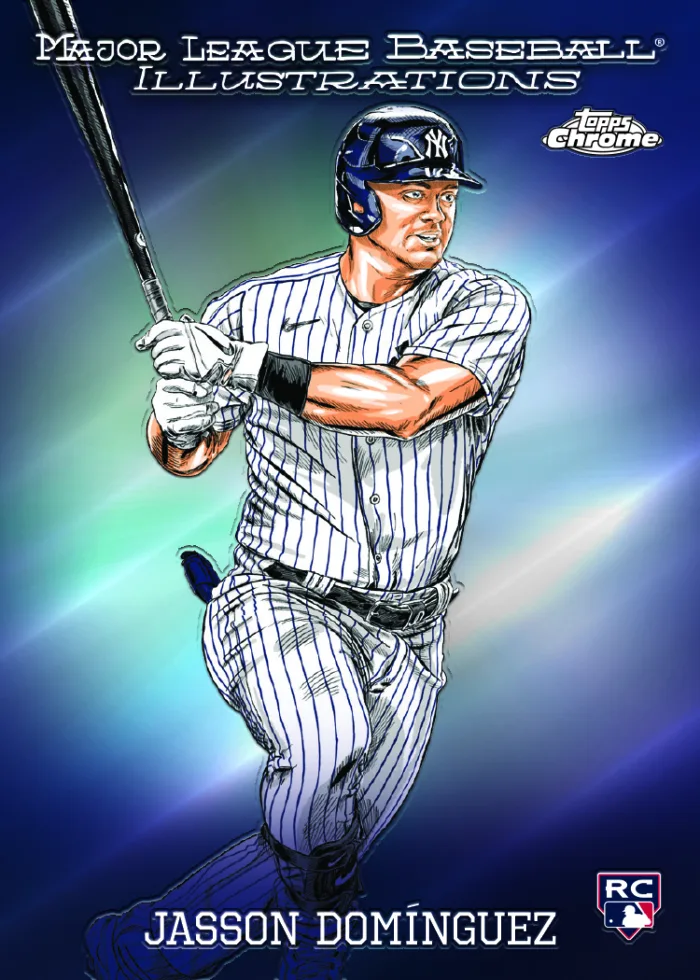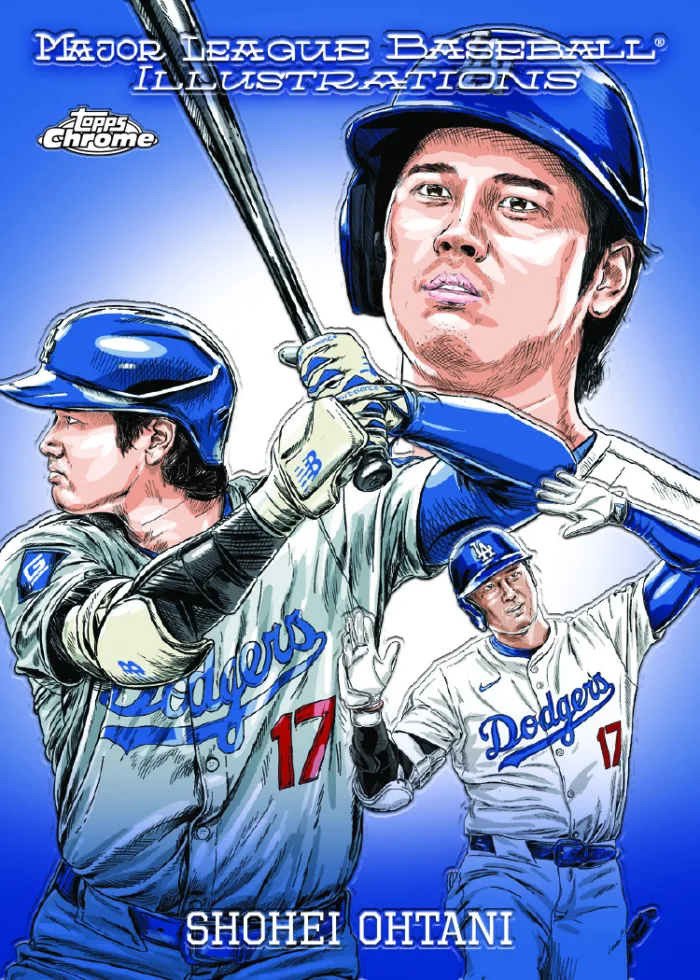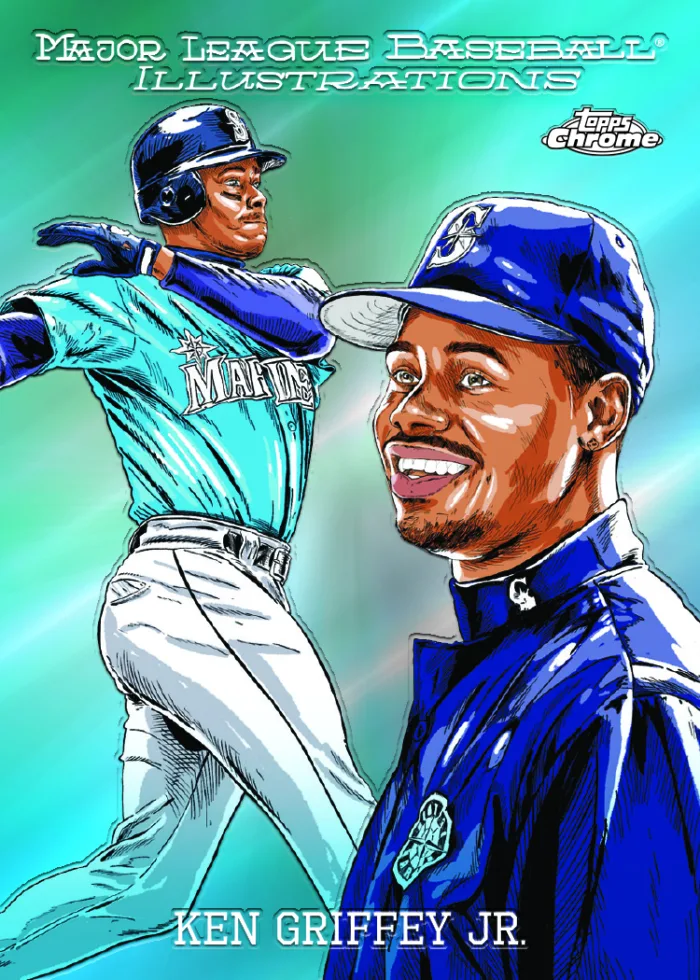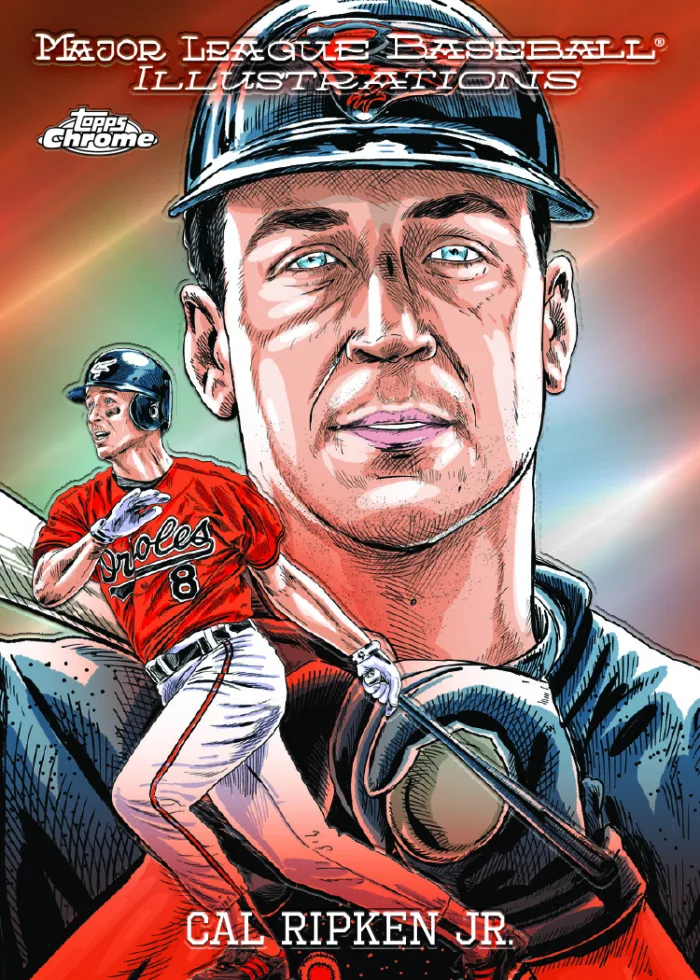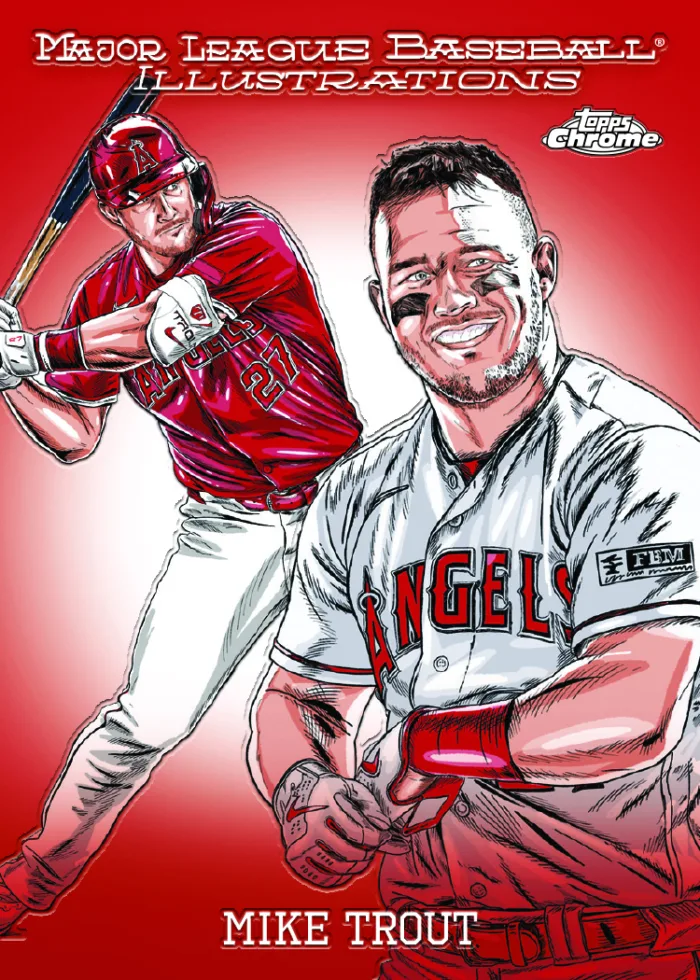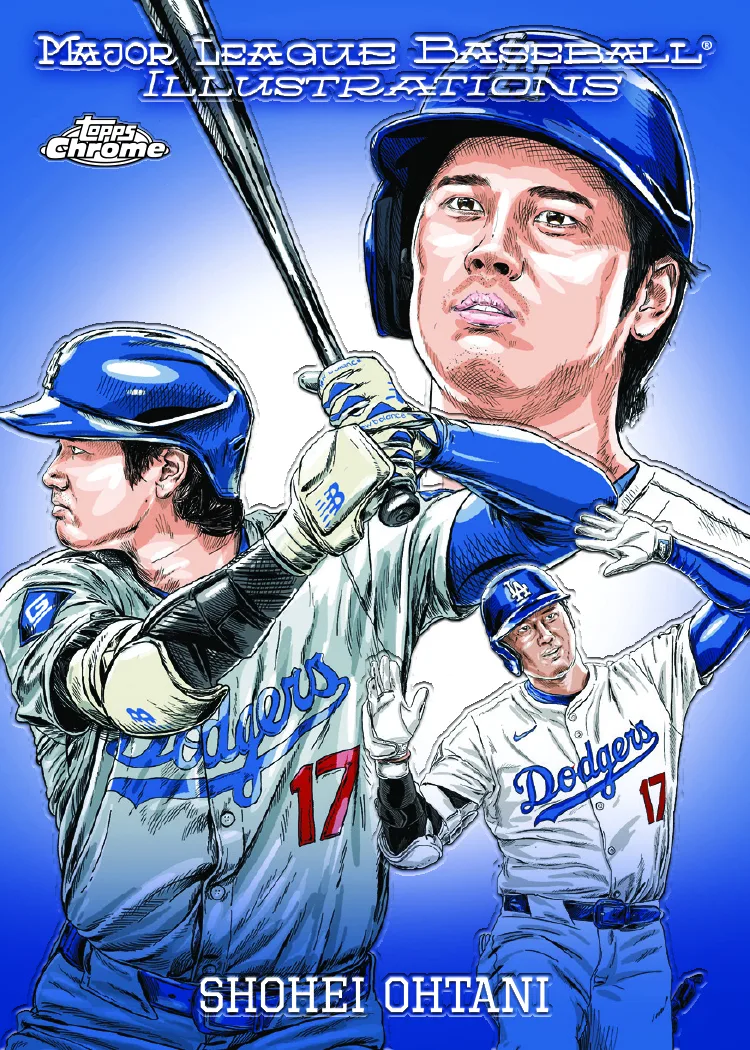
Discover the Art of Keith Vlahakis
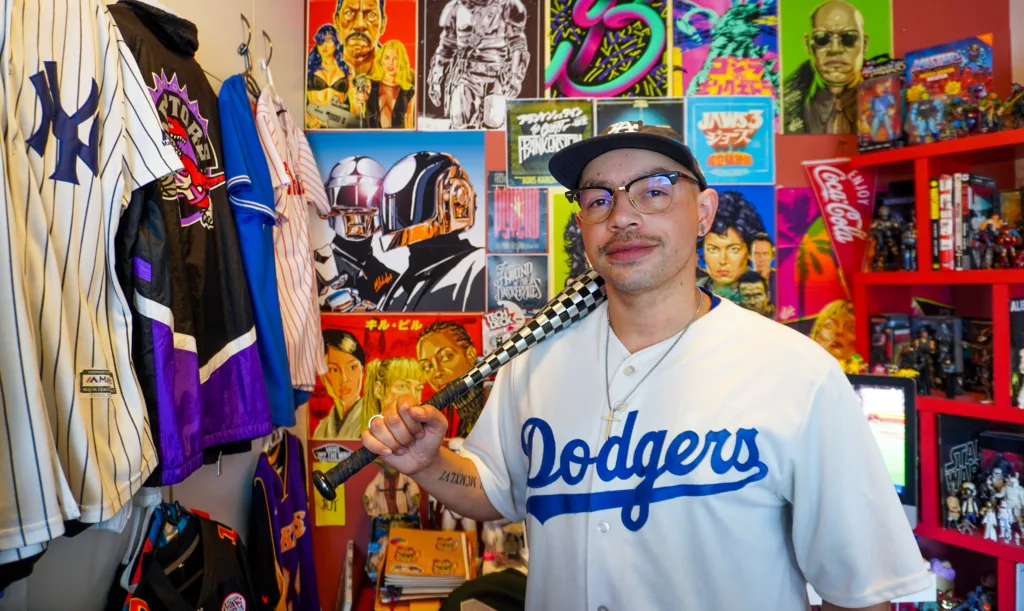
Portrait of the artist in his home studio (photo courtesy of Keith Vlahakis)
Stepping into Keith Vlahakis’s art studio is like wandering through a vibrant time capsule. Walls adorned with 80s and 90s memorabilia—baseball caps, vintage Nike sneakers, X-Men trading cards, VHS cassettes, and even spray cans—whisper stories of an era fueled by bold colors, iconic graphics, and endless imagination. For Vlahakis, these aren’t just collectibles but emotional artifacts that anchor his identity as an artist. “I collect because I’m a super nostalgic person,” he says. “My collectibles are like train tickets that take me instantly back to a fonder, happy time.”
As a multidisciplinary artist—part pop artist, part street artist, part illustrator—Vlahakis has always leaned into his love of nostalgia. This deep well of inspiration recently propelled him into a dream collaboration: designing the MLB Illustrations insert set in 2024 Topps Chrome Update Series. This opportunity felt serendipitous for an artist whose visual style has been shaped by the logos, typography, and graphics of Major League Baseball (MLB). “Never in a million years did I think I’d be designing baseball cards,” he admits. “But by sheer grace and God’s perfect timing, I got a DM on Instagram from the Topps brand manager. I had to pinch myself when I read the message.”
2024 Topps Chrome Update Series MLB Illustrations
The journey that led Vlahakis to Topps began decades ago, rooted in the universal childhood thrill of ripping open a fresh pack of cards. For him, it started in the early 90s with Marvel’s X-Men trading cards. Inspired by his older brothers, he eventually started collecting baseball cards, a passion he still maintains. “I still have my collection from the late 90s and early 2000s,” he says proudly. “Trading cards have always been part of my collecting journey, and they represent something universal—milestones that connect our pasts to our present.”
The Art of Collecting
For Vlahakis, collecting is more than a hobby; it’s an extension of his creative process. “I love well-made objects with a unique story behind them,” he explains. “Anything pop culture-related from the 80s or 90s is a big YES for me. These items evoke nostalgia and inspire my work.” His studio resembles a museum of ephemera—a curated archive of action figures, comic books, vinyl records, and retro sneakers. Each object serves as both a memory and a muse.
That passion for storytelling and attention to detail seamlessly translated into his Topps collaboration. While Vlahakis didn’t have a say in selecting the players featured on his cards, he trusted the expertise of Topps and MLB to curate a list that perfectly aligned with the current state of baseball. “Looking back, I realized how concise and considered their selection process was,” he says. “It was only as the season progressed, especially during the postseason, that I truly saw how perfect the list was.”
Designing 2024 Topps Chrome Update Series MLB Illustrations Cards
Creating a set of baseball cards was an intricate process that required both research and artistic intuition. “I approach it like a method actor preparing for a role,” Vlahakis says. “I study the players, watch every documentary I can find, and dive deep into their career stories. By the time pencil touches paper, I clearly understand who they are.”
His workflow is a meticulous blend of analog and digital techniques. After hours of research, he begins with pencil sketches and then moves to black-and-white inking. Only when satisfied with the linework does he add color, logos, and typography—elements that hold a special place in his heart. “When I received the team logos in vector format, I just stared in awe,” he recalls. It was an insane dream moment.”
The influence of baseball’s visual culture runs deep in Vlahakis’s work. From the rounded, serif typography of team logos to the bold graphics of jerseys, these elements have shaped his artistic style over the years. “I even write graffiti in the same typographic style as some of my favorite baseball teams,” he says. “This project allowed me to pay homage to a sport and culture that has greatly influenced my life.”
The Impact of Nostalgia
For Vlahakis, the ultimate goal of his art is to evoke joy. He hopes collectors feel a spark of excitement when they pull one of his cards, a sensation he compares to “that Saturday morning cartoons feeling.” Beyond the thrill of the chase, he wants his cards to become cherished pieces in larger collections. “It’s the biggest honor knowing that someone might pull a Topps superfractor designed by me,” he says. “I’m incredibly humbled.”
This sense of gratitude extends to his home country of South Africa, where trading card culture is still growing. Events like Comic Con and the rising popularity of sports like basketball and American football are gradually boosting interest in collectibles. “In South Africa, you really have to love the chase,” Vlahakis explains. “It’s not easy to find baseball cards here, so die-hard collectors go to great lengths to acquire them. But that struggle makes the community stronger and the rewards even sweeter.”
Baseball Cards as Art
When asked if baseball cards qualify as art, Vlahakis doesn’t hesitate. “Yes, absolutely,” he says. “I would pick a Mickey Mantle card over the Mona Lisa any day. Baseball cards are rich in detail and history; they’re an art form that rivals even the most prestigious museum collections.”
As for what’s next, Vlahakis has his sights set on new collaborations. A lifelong fan of Star Wars and WWE, he dreams of working on a project that bridges his artistic vision with these iconic franchises. But no matter where his career takes him, his mission remains the same: to blur the lines between high art and popular culture and create work that resonates across generations.
For Keith Vlahakis, every collectible tells a story. And through his art, he ensures those stories are preserved, celebrated, and passed down—one meticulously designed card at a time.
